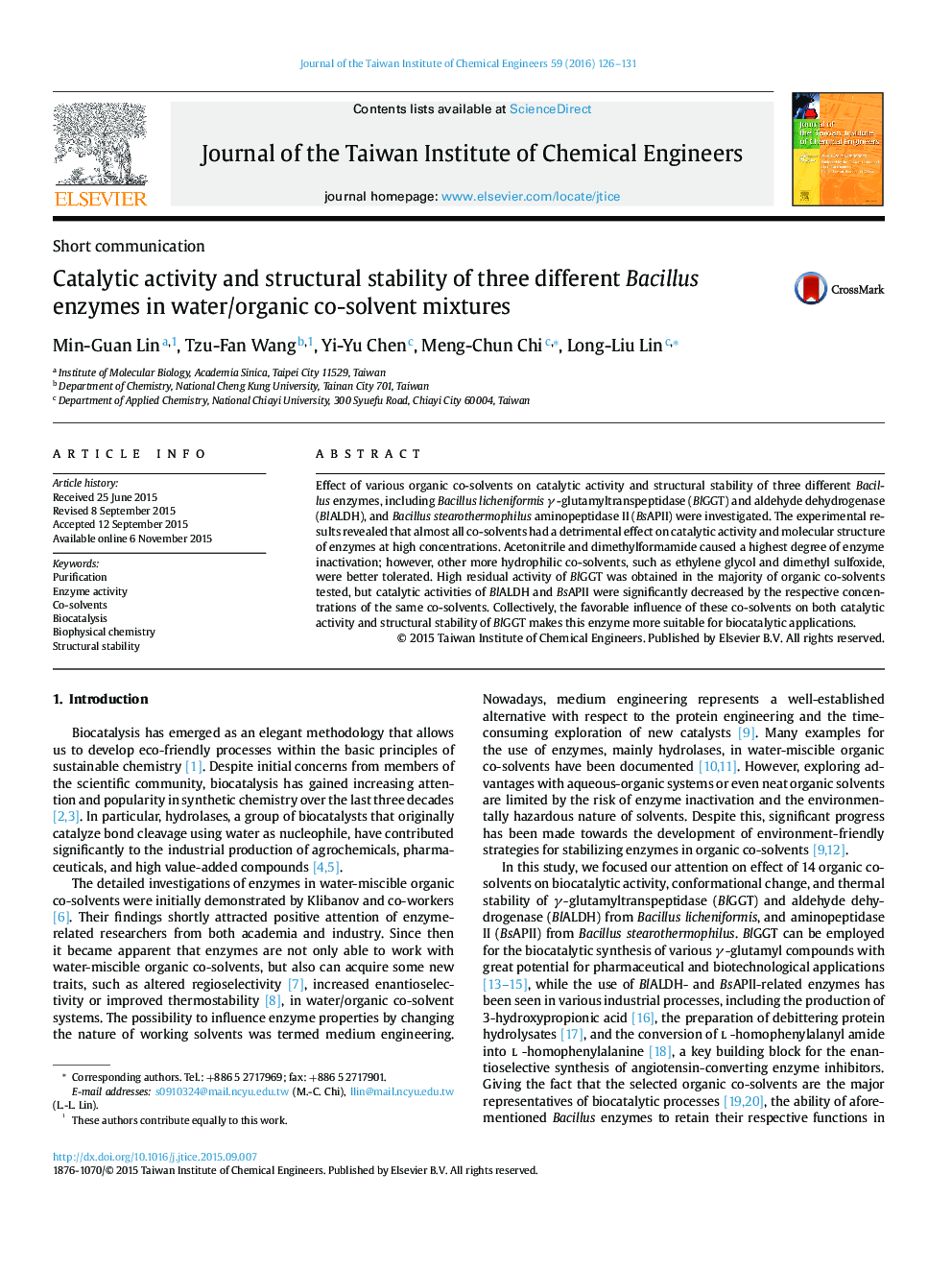| Article ID | Journal | Published Year | Pages | File Type |
|---|---|---|---|---|
| 690531 | Journal of the Taiwan Institute of Chemical Engineers | 2016 | 6 Pages |
•Three different Bacillus enzymes can act as catalysts in a number of organic co-solvents.•The catalytic power of γ-glutamyltranspeptidase in the majority of organic co-solvents is comparable to that displayed in buffer.•Acetonitrile and dimethylformamide cause a highest degree of inactivation towards the tested enzymes.•The molecular structures of aminopeptidase and aldehyde dehydrogenase are more sensitive to the organic co-solvents.•The experimental data emphasize the potential value of Bacillus enzymes for biocatalytic applications.
Effect of various organic co-solvents on catalytic activity and structural stability of three different Bacillus enzymes, including Bacillus licheniformis γ-glutamyltranspeptidase (BlGGT) and aldehyde dehydrogenase (BlALDH), and Bacillus stearothermophilus aminopeptidase II (BsAPII) were investigated. The experimental results revealed that almost all co-solvents had a detrimental effect on catalytic activity and molecular structure of enzymes at high concentrations. Acetonitrile and dimethylformamide caused a highest degree of enzyme inactivation; however, other more hydrophilic co-solvents, such as ethylene glycol and dimethyl sulfoxide, were better tolerated. High residual activity of BlGGT was obtained in the majority of organic co-solvents tested, but catalytic activities of BlALDH and BsAPII were significantly decreased by the respective concentrations of the same co-solvents. Collectively, the favorable influence of these co-solvents on both catalytic activity and structural stability of BlGGT makes this enzyme more suitable for biocatalytic applications.
Graphical abstractFigure optionsDownload full-size imageDownload as PowerPoint slide
